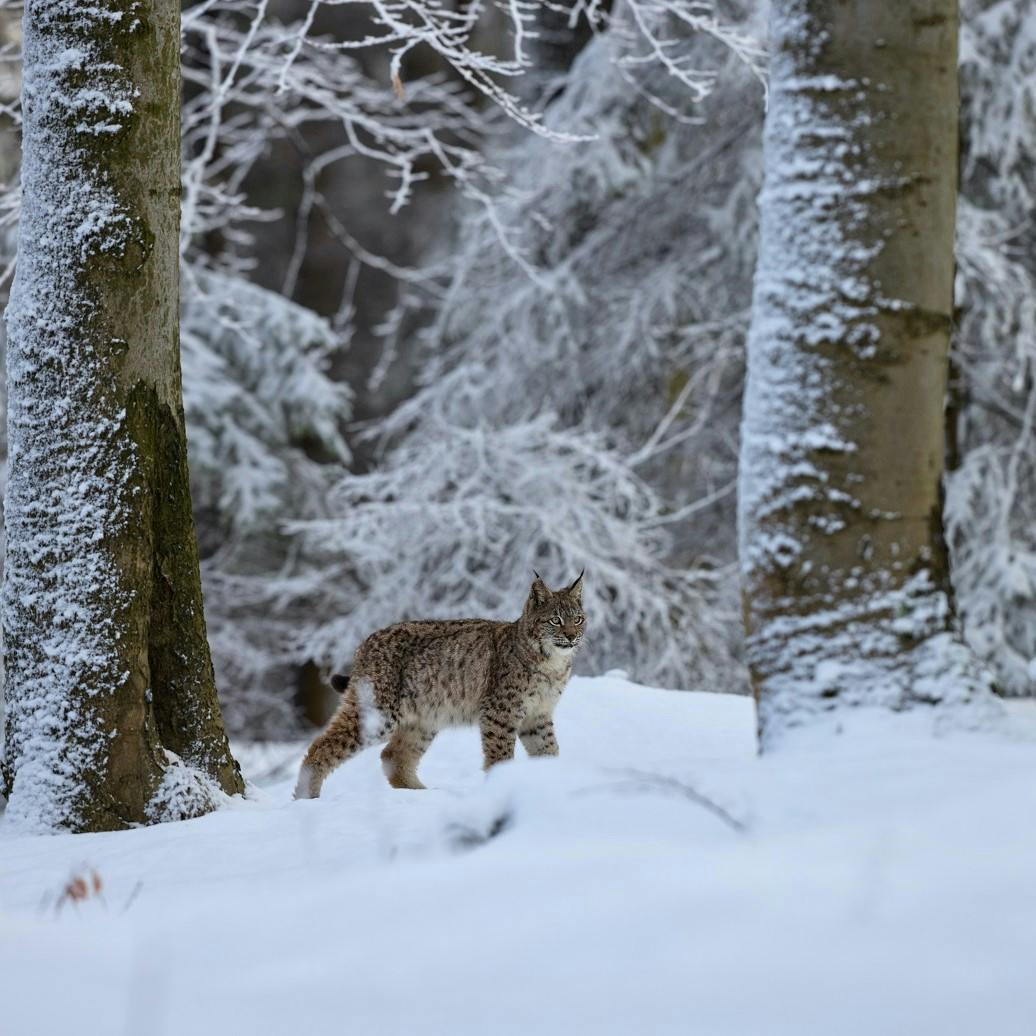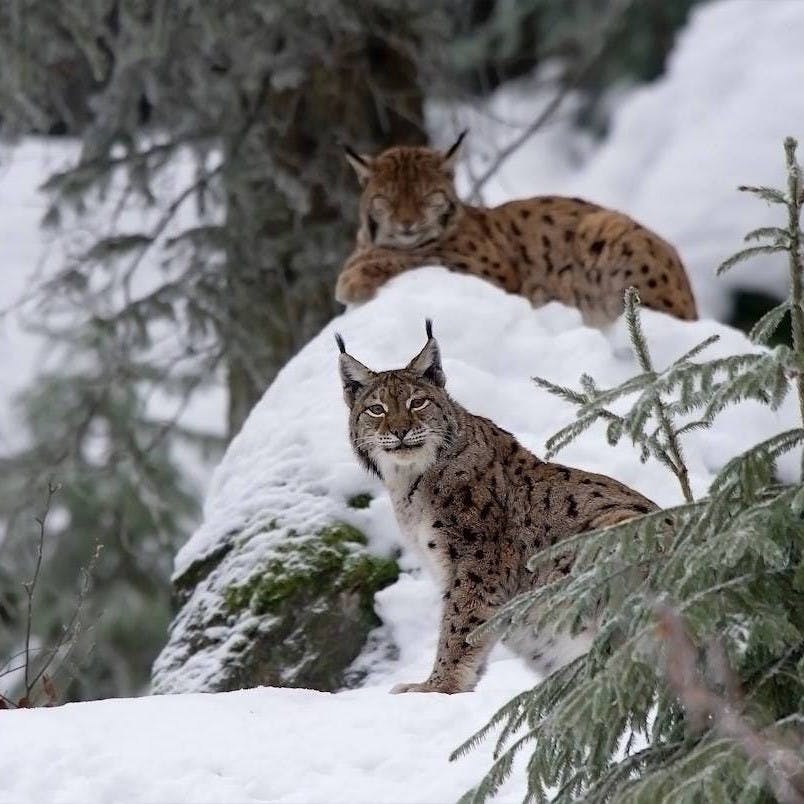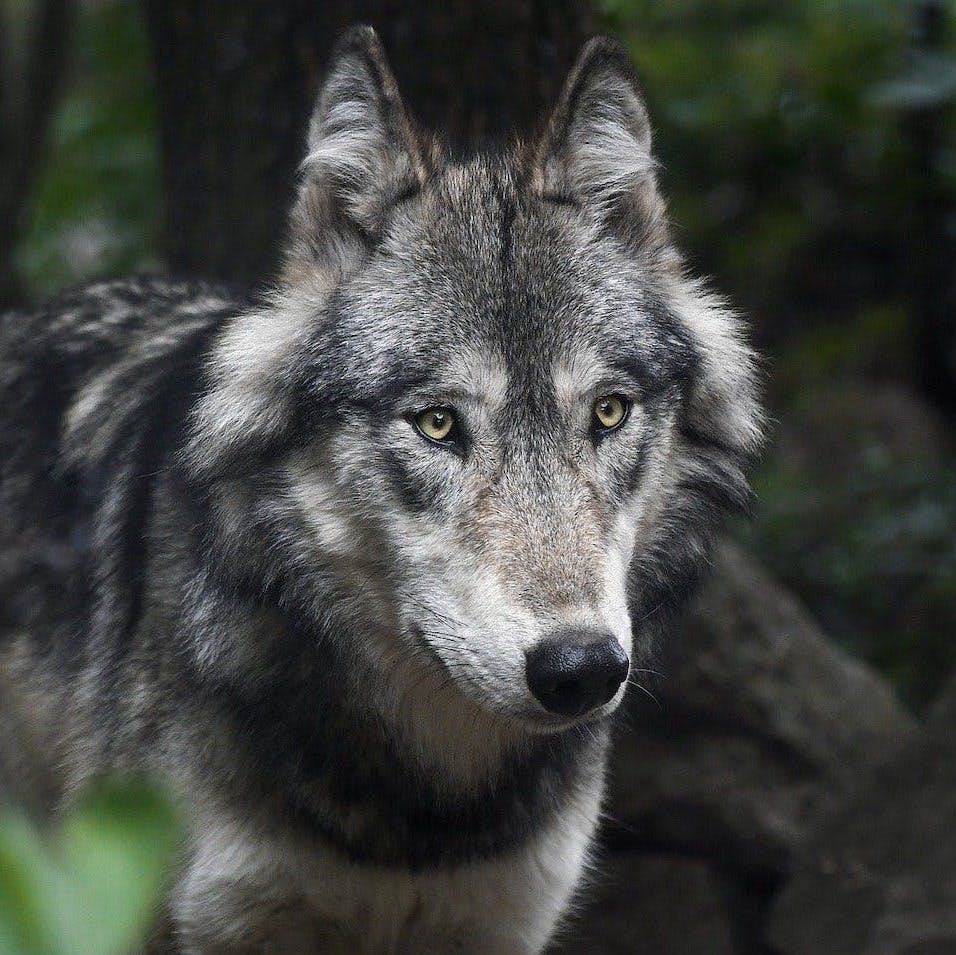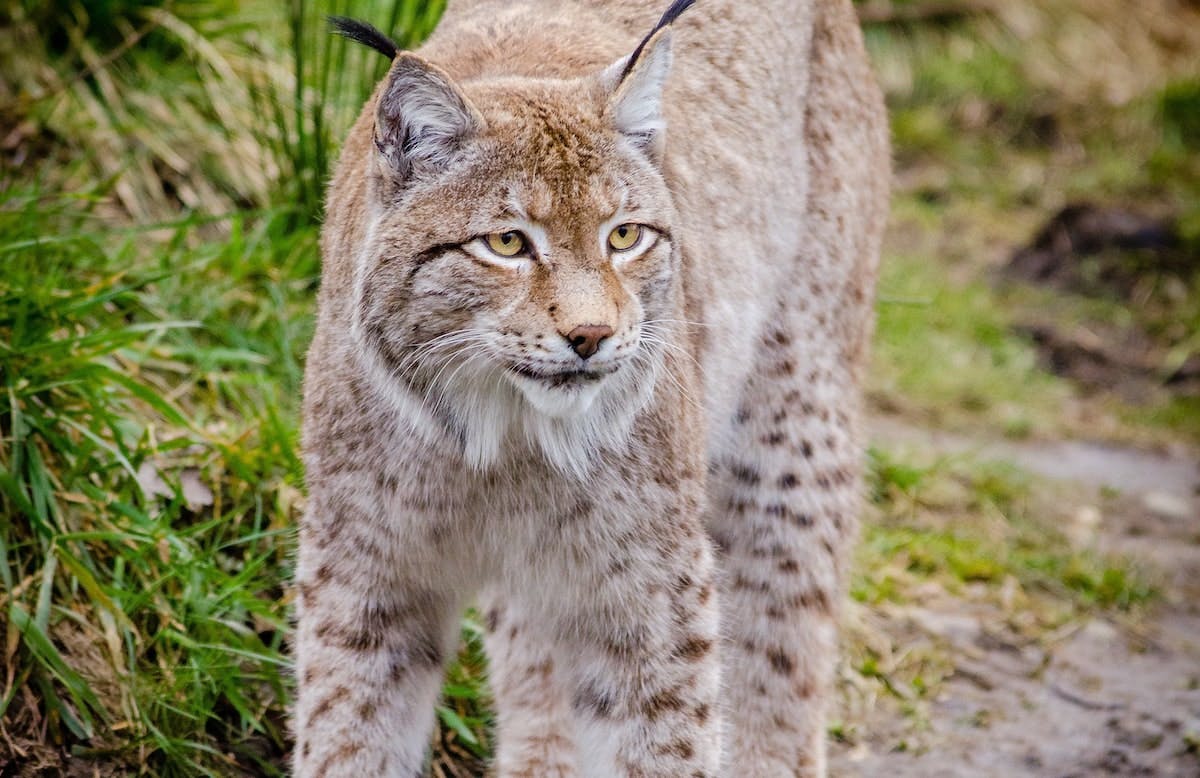Across parts of the British countryside, people are once again living alongside beavers, wild boar and white-tailed eagles. These keystone species were extirpated around 500, 400 and 200 years ago respectively, but have since reclaimed former territories. The Eurasian lynx (Lynx lynx) has been absent from the landscape for more than 1000 years, while the wolf (Canis lupus) and brown bear (Ursus arctos) have also been lost. For so long, the British countryside has been devoid of large carnivores and any memory of living alongside anything larger than a fox or badger has been lost. Some people believe that restoring apex predators would bring ecological and economic benefits, while others fear their return would bring unacceptable challenges and risks. Here, we will explore these issues with regards to the Eurasian lynx, the most currently debated candidate for carnivore restoration in Britain.
Making Room for Predators
Predators across Europe are making a comeback, much of it through natural recolonization. Wolves have recently been spotted in both the Netherlands and Belgium while lynx have once again spread across Scandinavia and Russia.
In areas where the Eurasian lynx have been unable to recover on their own, for example in areas in central and western Europe where the landscape is heavily fragmented, ambitious reintroduction projects have facilitated their return. People in Germany, Switzerland and France are once again sharing their forests with the Eurasian lynx. Britain and Ireland now remain the last countries in Europe whose landscapes are devoid of large predators.

The Ghost of the Forest
There are approximately 10,000 Eurasian lynx living across Europe’s landscapes. The lynx is the third largest land predator in Europe, around the size of a large dog (17-29kg), with only the wolf and brown bear being larger.
Typically a forest specialist, lynx are highly elusive and very difficult to see in the wild. Unlike other lynx species, like the bobcat (Lynx rufus) and Iberian lynx (Lynx pardinus), which prefer to predate on lagomorphs (rabbits and hares) and small birds, the Eurasian lynx is large enough to predate large game. Across much of their range, roe deer (Capreolus capreolus) are their preferred prey species.
From the forests of Russia to the rocky mountain slopes of the Himalayas, lynx rely on habitat complexity, like shrubs and bushes, fallen timber, rocks or whatever else it can find, for cover for successful ambush hunting. They are highly efficient predators and maintain high kill rates at very low densities of roe deer

Living Alongside Carnivores in the UK
The return of species that have not long disappeared is less challenging than those species that experience a prolonged period of time between extinction and reintroduction. The return of the lynx in Britain would have the largest time gap of any reintroduction project. While studies exploring habitat suitability and prey densities suggest that the Eurasian lynx could thrive in Scotland, the question remains whether the cultural landscape is ready.


Take action now
Do you want to have a direct impact on climate change? Sir David Attenborough said the best thing we can do is to rewild the planet. So we run reforestation and rewilding programs across the globe to restore wild ecosystems and capture carbon.
Get involvedFindings from 'Lynx to Scotland':
An assessment of the social feasibility of returning Eurasian lynx to Scotland
The most comprehensive study to evaluate key stakeholder perceptions of lynx reintroductions to Scotland was carried out by The Vincent Wildlife Trust supported by Scotland: The Big Picture between 2021 and 2022.
Views were gathered from a diverse range of rural stakeholders including farmers, gamekeepers, foresters, conservationists, landowners, tourism operators and rural communities on possible lynx reintroductions to Cairngorms National Park and Argyll.
To read about the full range and depth of the discussions see the Lynx to Scotland Report here. For an overview, we’ve condensed some of the key findings below:
- The interviewed stakeholders held 5 broad perspectives entitled:
Lynx for Change (1), No to Lynx (2), Scotland is not ready (3), We are not convinced (4), Lynx for the economy (5). - Two perspectives are in favour of lynx reintroductions (1) & (5), one is against (2) and the remaining two (3) & (4) are not currently in support but are willing to explore the potential further.
- Habitat suitability was a key theme which divided opinion. Some stakeholders believed there isn’t the sufficient quality of woodlands for the lynx yet, although lynx ecologist experts stated the animal’s primary needs of ambush cover, prey availability and secure denning sites would be met at the proposed sites.
- Inferring that lynx behaviour from European countries where it already exists would be similar in Scotland’s context was questioned by some stakeholders, to which proponents of reintroductions felt their behaviour is to a great extent predictable, irrespective of habitat.
This relates to the concern about human disturbances from the close proximity of apex predators. The large carnivore recovery in relatively densely populated areas of Europe was raised as an example of lynx coexistence with people. However, concerns remain in relation to the proposed sites in Scotland as they are intensively used for natural resource management, farming, conservation, sporting interest and tourism. - The extent of people’s role in managing wildlife and the environment, mainly deer and woodlands, was another main talking point. Arguments in support include that lynx predating deer would help nutrient cycling, vegetation and tree regeneration and provide carcasses for other species in progression towards a self-sustaining system - a vital component of the vision to rewild Scotland. However, there was scepticism over whether lynx would provide a ‘silver bullet’ for the overpopulated deer problem, instead offering a more ‘natural’ mechanism of deer control than culling. Expectations that ecosystems can be self-regulating in what was described as a highly altered, managed landscape were felt unrealistic by several groups of stakeholders.
- On the issue of deer management, perceptions of deer abundance varied greatly, especially roe deer. This is central to the discussion on how the lynx would impact the ecology of the areas and so the report recommends that more explicit information is needed.
- There were questions raised about the potential impact of lynx on other rare Scottish species such as the capercaillie and Scottish wildcat. With considerable funding already invested in saving these species, some stakeholders are worried the efforts to protect their struggling populations would be undermined. Conservation stakeholders claim the lynx could create a sustainable, long-term solution to the predation threats of these rare species. In the case of the wildcat, lynx could help their conservation by preying on foxes and feral cats. It was noted that capercaillie are not prevalent in the lynx’s diet and where they coexist in the Swiss Jura mountain range there are strong populations of capercaillie. Climate change and habitat were mentioned as being the most significant drivers of their decline.
- Advocates of lynx reintroductions stated the anticipated benefits from the presence of lynx through trophic interactions would contribute to more balanced, diverse woodlands ecosystems helping achieve sustainable biodiversity recovery. In response, other stakeholders want reintroductions to be able to demonstrate this through a ‘net gain’ in biodiversity.
- The most crucial area of friction and challenges lay in the discussions related to the anticipated impacts on livestock, particularly sheep. All parties agreed there is likely to be some sheep predation by lynx but there wasn’t a consensus on the extent and range of impacts in Scotland’s context. What was concluded is that mitigation of potential impacts would be the highest priority and that more thorough investigation is needed in this area. This would involve taking into account the science and local knowledge from experts in lynx behaviour and agriculture researchers, especially in regards to how and where sheep are kept in relation to lynx habitat and behaviour.

Proposed Mitigation Measures
Possible measures to mitigate impacts were discussed such as an environmental payments scheme funded by the government as well as a call for sheep farmers to be fairly compensated for meat and wool products they produce to help protect their livelihoods. The use of fencing and guardian animals as protective measures against sheep predation received little support from stakeholders. The reasons cited were the impracticality and cost of installing fencing over difficult terrain. Additionally, this might not be feasible due to the ‘right to roam’ law which allows access to the public across Scotland, and would also increase the risk of attacks on the public and pets by guardian animals.
The most promising mitigation measure discussed would be to fund more shepherds and invest in promoting the practice of close shepherding as used in countries where sheep are reared alongside large carnivores. The topic of licensed lethal control was disputed with various views across the board potentially posing as a barrier to implementing reintroductions.
Other themes of discussion in the study
In addition to the issues above stakeholders also evaluated the potential negative effects on farming culture and identity; the impact on deer stalking businesses; the potential for ecotourism to benefit local economies; the intrinsic value of lynx to society; the perceived moral obligation to return the species; the disconnect between rural and urban communities on the topic; the lack of trust resulting from the management of previous reintroductions of other species; the conservation prioritisation of existing species and the influence on policy makers.
Conclusion
Based on the broad range of issues explored in the study it is clear to the eye that the subject is nuanced and complex with significant barriers remaining before trial reintroductions are realistic. The report concludes that the parties involved are eager to further the evaluation of lynx reintroductions through a cross-sector Lynx Action Group. Its objective will be to build trust and improve knowledge through addressing contested areas, filling gaps and creating new knowledge.
A Future in Britain
The return of lynx to Britain is as much a social issue as it is an ecological one. While studies suggest that populations of Eurasian lynx could live in Scotland’s forests, it is clear that there is not yet sufficient local support for the return of this top predator. Further work is needed to assess the feasibility of lynx reintroductions and address the concerns of those who would need to learn to coexist with a carnivore. Successful reintroductions of Eurasian lynx to other European countries show that it’s possible to restore this beautiful feline to de-wilded landscapes. Meanwhile, communities across Europe are learning to live alongside an even more challenging predator, the wolf.
If you have enjoyed reading about this elusive cat, we also recommend our Tracking Lynx in the Southern Carpathians article, podcast and YouTube video where we unpack more about lynx subspecies and reintroductions (both successful and unsuccessful) across Europe.
Glossary of terms
Biodiversity: Standing for biological diversity, it is referring to all plant and animal species in an area and their abundance. A high level of species diversity is important, the more abundant and diverse, the better.
Depredation: This is the act where apex predators such as a wolf, bear or lynx, will attack and kill domestic animals. Although these animals do not usually hunt domestic livestock, depredation of farm animals has made the reintroduction of these species increasingly difficult.
Fragmented Landscape: When large patchy areas of forest are created due to deforestation and are made separate from one another. This can create serious issues for the wildlife that exists within them as the area of their habitat is greatly reduced and now isolated.
Morphology: When people refer to the shape, size or structure, they are referring to its morphology. This is the study of these areas and much attention goes into learning about the morphology of plants and animals, and how they are adapted to deal with their environments.
Physiology: This is the study of how an organism functions. Physiology looks at how the internal systems of an organism operates opposed to the structural make-up (morphology). For example the physiology of the endocrine system or the nervous system.
Prey Densities: This is the abundance of an animal’s prey that is found in an area. The over/under abundance of prey can be linked to the predators or, environmental changes i.e. habitat loss, human impact.
Sources & further reading

- “Successful Deer Management in Scotland Requires Less Conflict Not More” - Frontiers in Conservation Science
- “Myths, Wishful Thinking, and Accountability in Predator Conservation and Management in the United States” - Frontiers in Conservation Science
